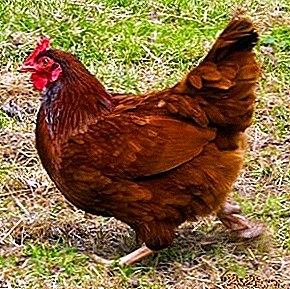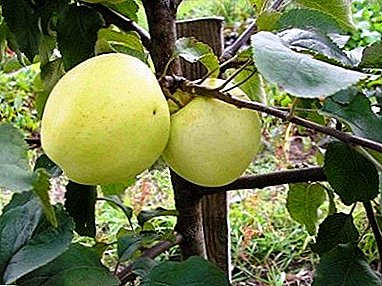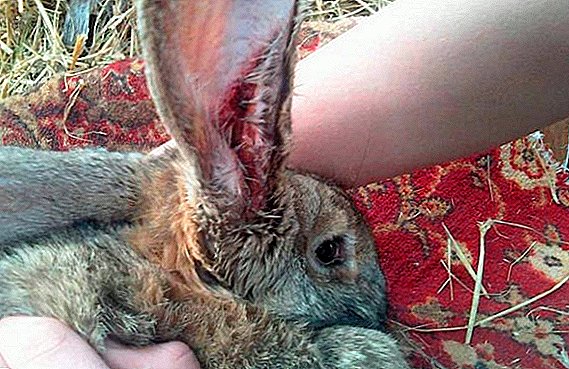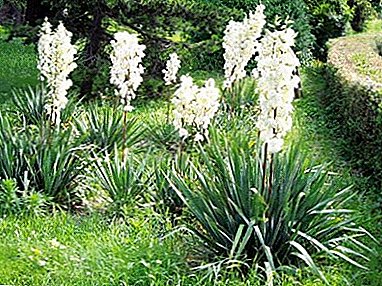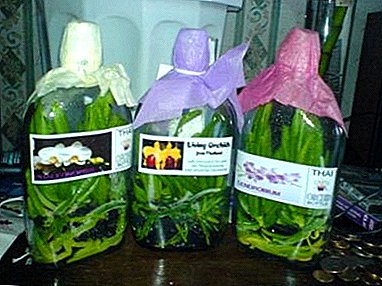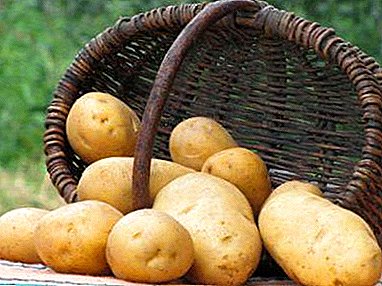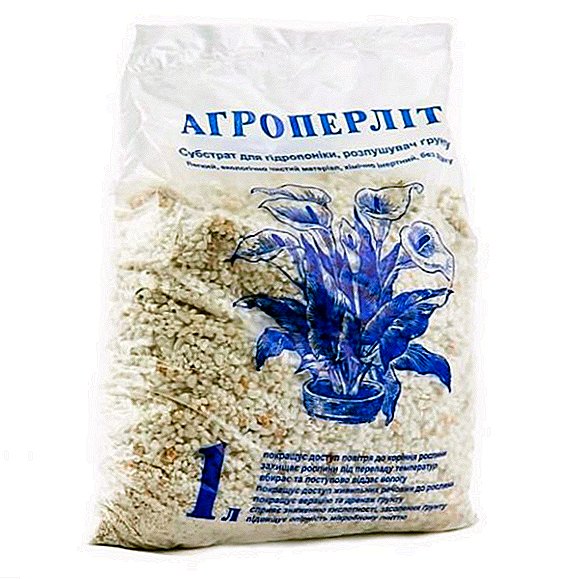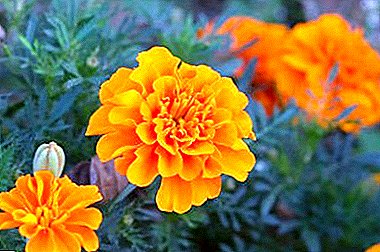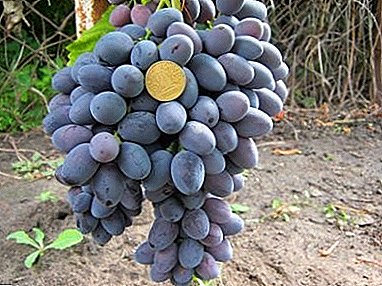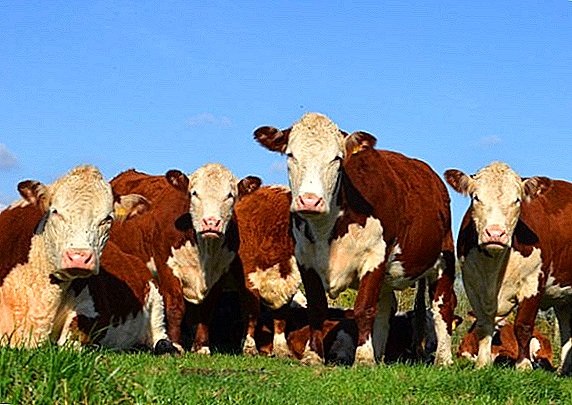 Today, Hereford cows - one of the most common in the world of beef cattle breeds (cattle). These large, hardy animals are notable for their remarkable appearance and quick weight gain, and also give high quality meat.
Today, Hereford cows - one of the most common in the world of beef cattle breeds (cattle). These large, hardy animals are notable for their remarkable appearance and quick weight gain, and also give high quality meat.
Inference history
For the first time Hereford breed of cows was bred in england in herefordshire (city Hereford) in the XVIII century. It was a real breakthrough in breeding, as the animals of this breed are especially fleshy and are still deservedly popular all over the world.
The breed was bred in the era of industrialization, when the demand for meat increased significantly. There was a need to breed animals that can meet the needs of the population. The question of milkiness at that time was not so acute and the emphasis on this ability of the cows was not raised.  Therefore, breeders began to cross between themselves large young growth of red cattle from North Devon and black Sussex cows. The calves of the new generation were given a great deal of physical exercise, developing muscle mass and increasing the force of the spring. They were grazed separately from other cows and fed with rich fortified food. And after two generations, it was noticed that the new individuals are much larger than their parents.
Therefore, breeders began to cross between themselves large young growth of red cattle from North Devon and black Sussex cows. The calves of the new generation were given a great deal of physical exercise, developing muscle mass and increasing the force of the spring. They were grazed separately from other cows and fed with rich fortified food. And after two generations, it was noticed that the new individuals are much larger than their parents.
The founder of the breed is Benjamin Tomkins, who marked the beginning of the history of the Herefords in 1742. He was the owner of two heifers and one bull, which became the official progenitors of the Hereford cattle. Finally, the Herefords appeared after adding to the ancestors of the blood of the Shorthorn cows.
 Hereford bull Mr. Jeffreys, who won the first prize of the Royal Agricultural Exhibition in 1843 in Derby
Hereford bull Mr. Jeffreys, who won the first prize of the Royal Agricultural Exhibition in 1843 in Derby
In 1846, the Herefords were recognized as a true breed of cattle, their first stud book appeared. After that, from the middle of the XIX century, began spreading Hereford breed around the world.
Did you know? The world record holder among the bulls, listed in the Guinness Book of Records - a bull named Field Marshal of the English breed Charolais. It weighs 1,700 kg and is almost two meters tall!
External features
Business card hereford cattle - white head. This is the brightest feature of the animal. In addition to the head, in white painted dewlap, belly and tassel on the tail. The rest of the body has a dark red or pie-red color.  Body type cows are stocky, with a developed muscle mass, weight is large. Growth low, squat, legs short and strong. The body is broad, resembling a barrel, with protruding flanks. The neck is a bit short, and the dewlap protrudes.
Body type cows are stocky, with a developed muscle mass, weight is large. Growth low, squat, legs short and strong. The body is broad, resembling a barrel, with protruding flanks. The neck is a bit short, and the dewlap protrudes.
Leather in the Hereford thin and elastic, covered with soft and rather long curly hair, which is especially noticeable in the neck and head. Under the skin there is a layer of fat.
Classic Hereford breed is the owner hornsthat are directed to the sides and forward or down. The horns themselves are white, but their tips are dark.
Familiarize with meat (Kalmyk, Kazakh, Highland, Aberdeen-Angus) and meat and dairy breeds of cows (Simmental, Shorthorn).
Today, the most common are Herefords of a kolom species, which have no horns. This is the only difference from the classic representatives. The absence of horns makes the lives of animals safer when figuring out the relationships within the herd, so now it is specifically hornless cows and bulls that are specifically taken out.
Also, representatives of this species do not give large yields, so the udder of the cows is not very developed, neat and has a small size.  Representatives of Hereford KRS have the following standards:
Representatives of Hereford KRS have the following standards:
- height at withers from 120 to 130 cm;
- chest girth from 190 to 195 cm in chicks and from 210 to 215 cm in bulls;
- depth of chest is about 72 cm;
- trunk length up to 153 cm;
- cows weigh from 650 to 850 kg, bulls - from 900 to 1350 kg;
- weight of newborn girls from 25 to 30 kg, bulls - from 28 to 33 kg;
- The first calving in cows occurs between the ages of 24 and 30 months.
Important! Herefords grown in the UK have much larger dimensions than cattle in Russian breeding farms. So, in their homeland in England, cows usually weigh at least 800 kg, and bulls - from 1 to 1.5 tons. In Russia, bulls reach only 850 kg, and cows are even smaller.
Why keep: direction
Herefords is beef cattlewhich gives the meat of high quality - marbled beef, which is very much appreciated in cooking. Slaughter yield from an animal is approximately 60%, and sometimes reaches 70%.  Milk from cows is fat (up to 4%), however, the milk yield is small and mostly spent on feeding calves. Therefore, this breed of cattle is not kept to collect milk.
Milk from cows is fat (up to 4%), however, the milk yield is small and mostly spent on feeding calves. Therefore, this breed of cattle is not kept to collect milk.
Herefords are bred for the sale of meat. Calves are born small (up to 30 kg of weight). The birth rate is high, calving passes easily because of the stocky body type and small size of the fetus, so the mortality of calves is quite small (no more than 2%).
Calves gain weight quickly - By the year, bulls already weigh up to 320 kg, and chicks up to 270 kg. By one and a half years their weight doubles. The increase in muscle mass on average is about 1100 per day. In puberty, cattle reaches 2-2.5 years. The maximum weight of the hereford reaches one and a half tons.
The elastic, thin and durable skins of these animals are highly valued in the manufacture of bags, wallets and shoes.  Hereford breed - This is a good beef cattle, and their meat productivity is considered one of the best. These animals are great for meat production and industrial content, but for a private farm estate is not very profitable, since the cost of acquiring a breeding specimen is large enough.
Hereford breed - This is a good beef cattle, and their meat productivity is considered one of the best. These animals are great for meat production and industrial content, but for a private farm estate is not very profitable, since the cost of acquiring a breeding specimen is large enough.
Breeds of dairy cows are considered to be Yaroslavl, Kholmogory, Jersey, Holstein, brown Latvian, red steppe, Dutch, Ayrshire.
Spread in the world
Today, this breed of beef cows is one of the most common in the world. It is most widely grown in countries such as the UK, Australia, Canada, USA, New Zealand.  In the CIS countries, Hereford cattle are bred in the largest quantities in many regions of Russia and in Kazakhstan.
In the CIS countries, Hereford cattle are bred in the largest quantities in many regions of Russia and in Kazakhstan.
Did you know? Cows feel time very well. If you are late with milking by only half an hour, the volume of milk will decrease by 5%, and its fat content by 0.2-0.4%.
Meat quality
The meat quality of Hereford cows is very high. The meat is marble and is considered a delicacy. It is red in color and contains inclusions of intramuscular fat, which gives it a marble look.
The meat is juicy and soft, it is recommended to use it for cooking steaks - not fried and medium. Tastes are high and very appreciated by gourmets. 
How much milk does it give
You should not try to get high milk yield from the Hereford cow, because this animal was bred only to produce large quantities of high-quality meat.
Udoy usually does not exceed 1000 liters. The quality of milk is high, the fat content is good (4%).
All milk yield usually goes to feed calves in the first months of their life - there is enough milk for these purposes. But for industrial purposes, milk from these cows is not collected.
Learn more about the advantages and disadvantages of using milking machines for cows.
Care and maintenance
Cowsheds for the Herefords make them spacious, where animals can freely accommodate. In the center are the feeders. The main conditions for such a room are dryness, lack of drafts and cleanliness. Despite the fact that the breed easily adapts to cold weather, it does not tolerate drafts and high humidity. In addition, these animals are not very fond of excessive heat, so let the winter in the stall be a little cool, but not too hot.  So that animals do not freeze, they need to regularly clean and comb the wool, because it is thin, long and curly, and therefore prone to the formation of lumps. If the wool is felted, it will not warm the cow, and it will not look aesthetically pleasing.
So that animals do not freeze, they need to regularly clean and comb the wool, because it is thin, long and curly, and therefore prone to the formation of lumps. If the wool is felted, it will not warm the cow, and it will not look aesthetically pleasing.
Also, a separate calving hut is installed in the stall, where cows are transferred several days before giving birth and kept there for some time after calving. It is possible to equip a similar separate pen for calves, in order to separate them by age. However, in the summer pasture, all animals are together in a free pasture.
Hereford cows are freedom-loving, so they are not kept on a leash. They should move freely around the pen, having access to drinking bowls with water, which must be regularly replaced.
Important! This breed is rather shy by nature and can be frightened by any sudden movement or loud sound next to it. Therefore, when caring for animals, keep yourself quiet, and your movements should be slow and gentle.
Herefords are in good health and do not get sick so often. However, they have a tendency to some serious hereditary diseases. For example, they may develop squamous cell carcinoma of the eye. Individuals living in hot countries, where they receive too much of the UV light, are most susceptible to it. At risk are those cows that do not have dark circles around the eyes.  Also, cows living in constant sun conditions often get burns on the udder. This is due to the fact that under white wool there is usually white skin - there is no melanin pigment in it, which is responsible for protection from ultraviolet radiation. The udder has the thinnest coat, so it often burns.
Also, cows living in constant sun conditions often get burns on the udder. This is due to the fact that under white wool there is usually white skin - there is no melanin pigment in it, which is responsible for protection from ultraviolet radiation. The udder has the thinnest coat, so it often burns.
Read also about diseases of cows and their treatment: swelling of the udder, hoof disease, leukemia, mastitis, pasteurellosis, ketosis.
As for the rest, the Hereford breed is easy to maintain, not demanding on conditions and temperature, and is able to eat a variety of food.
How does cold endure
Hereford breed of cows is able to adapt to any weather. She endures cold, even the harsh Siberian frosts, quickly adjusting to changing climatic conditions.
Cows of this breed are able to tolerate hot African climate, changeable weather conditions in the middle zone, and low northern temperatures. Cool air is even more preferable to them than constant hot sun. 
What to feed
When breeding the Hereford breed, the breeders set themselves the goal of creating a cow that would actively gain weight on grass alone, on impoverished pastures. Therefore, their feeding should be preferably grassy.
Tips for animal breeders: how to feed a dairy cow and calves.
In the summer, animals are allowed into free grazing on pastures, and in winter they are fed mainly with hay. To get the Forford gain weight faster must be included in their diet:
- hay from cereal and leguminous crops (such a product is especially important for digesting bulls for maintaining health and reproductive functions);
- salted barley;
- succulent feed;
- beetroot (normalizes the intestinal microflora);
- fertilizing with phosphorus, proteins and calcium (contribute to strengthening the skeleton and faster weight gain).
 Rough feed, silage and mineral dressing are given to cows that feed calves, since the feeding process exhausts the heifer quite a lot, and it needs additional feeding.
Rough feed, silage and mineral dressing are given to cows that feed calves, since the feeding process exhausts the heifer quite a lot, and it needs additional feeding.Important! In winter, Hereford cows consume a very large amount of feed. So, up to 10 heads can take up to 150 tons of hay.
Advantages and disadvantages
Hereford cows differ from other breeds such positive qualities:
- high survival rate of calves after childbirth;
- high fecundity;
- early maturity;
- rapid growth of calves;
- rapid weight gain, which can reach 1 kg per day;
- good adaptability to weather conditions, even harsh, which makes it possible to breed these cows where conditions are unsuitable for other breeds;
- unpretentiousness to food when cattle can eat even weeds;
- resistance to many diseases;
- endurance, which is why cows easily tolerate long hauls, can stay on their feet for a long time;
- high quality marble meat.
 The disadvantages of the breed include:
The disadvantages of the breed include:
- huge consumption of food by livestock, which is difficult to provide in winter;
- poor tolerance of drafts and high humidity;
- increased demands for cleanliness and tidiness;
- low milk yield, which is only enough to feed the calves in the first months of life.
Important! The meat of the herefords grown in the summer is almost one and a half times cheaper than the meat of the "winter" individuals. And all because in the summer period, the cows feed on almost 100% pasture grass, which reduces the cost of their feed and maintenance to a minimum.
Video: Hereford beef cattle
Hereford breeder reviews about the breed


Hereford breed of cattle is considered one of the most common in the world, and its popularity is fully justified by the high lethal yield of high-quality marble meat, unpretentiousness in food and fairly simple content. Hereford cows are excellent for industrial livestock. And in a private farm, such an animal can play a good service, participating in the improvement of local breeds.


